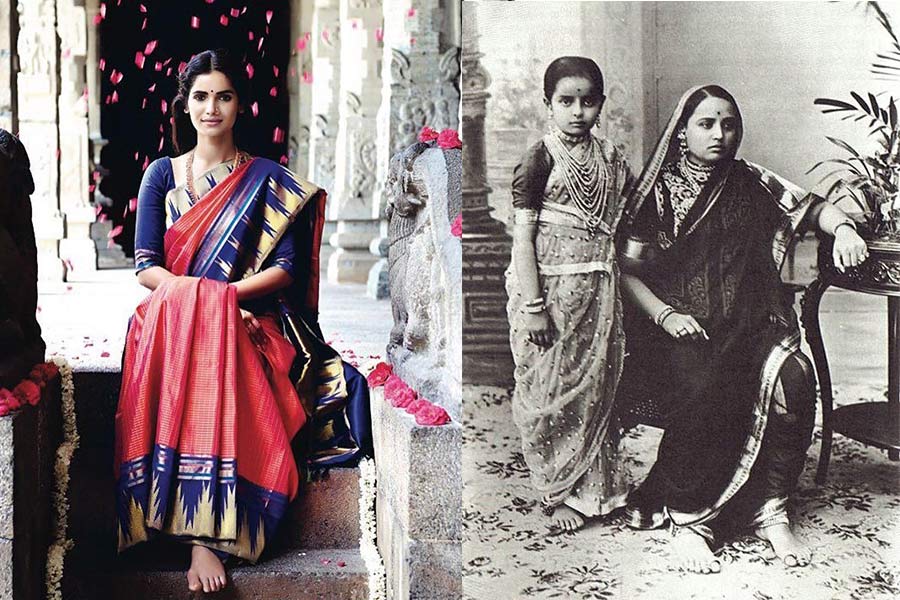Going Back In Time
From when a girl child is born, some people have a practice, where the child is made to sleep on a “thottil” (cradle) that is tied using a silk saree. While the others, place a piece of silk cloth beneath the baby on an actual cradle.
When was the first time you wanted to drape a saree?
3 year old or maybe, 5?
Every girl child’s first saree is the mother’s dupatta that she wrapped around her and she thought she looked ravishing, but most importantly, she thought she looked like her mother. Let me tell you, we know how strong is the bond between a mother and daughter but the bond between a daughter and her mother’s saree is even stronger. I might even happily and without a doubt say, the bond between a girl and her saree has stories and memories attached to it, that makes the bond what it is.
From the first saree for school farewell to every saree we eyed on from our mother’s closet and impatiently waited to grow up to be clad in those six yards. I’m sure, we all have our share of nostalgia and emotions attached to every saree.
Living in the 21st century, we are in an era where fashion has grown tenfold and a person’s social status is valued by the number of brands they wear, but according to our culture and roots, back in the day, it was valued by the richness of the fabric they wore as only the people with a higher social status alone could afford a silk saree. There are various fabrics and a range of sarees being made, what makes that one saree special? Why do we need to preserve it, when we can buy new ones when this saree looks old or worn out? Here’s a secret, a saree can never look worn out if it’s of good quality. A saree is the only garment that never goes out of style and any pattern or design are always in vogue. While the new designs and patterns are being fancied by everyone, the old ones are treasured.
How to preserve a saree?
There are a few simple steps to preserve a silk saree,
- Change the folding of your saree every month or two months once so the creases do not weaken the fabric.
- Use an insect repellent powder to protect your saree from insects and bugs.
- Sarees with a heavy zari work should be wrapped in a cloth and kept in the cupboard to prevent the colour of the zari from fading.
- Storing a saree that has too much starch can also do a little damage to the saree, washing it once with cold water removes the excess starch.
- Do not iron the saree as it will stretch the fabric and weaken it. Use only a steam iron to iron silk sarees.
Finally, these sarees that were being passed on to the daughters and granddaughters are not just about the nuances of the threads and the colours or not even the family tradition, these sarees carry a lot of love and emotions attached to it, that has been passed on. Sometimes, only you know how you felt when you wore the saree for the first time, share that feeling with your heirs.




